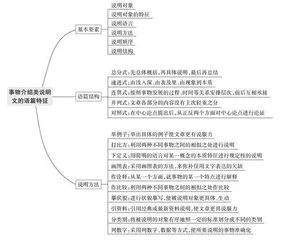事物介绍类说明文读写指南
作者: 莫炎芬

文体导读
事物介绍类说明文是一种以说明为主要表达方式、以介绍事物为目的的文章体裁。此类文章对客观事物做出说明或对抽象事理进行阐释,使人们对事物的形态、构造、性质、种类、成因、功能、关系,或对事理的概念、特点、来源、演变、异同等能有科学的认识。说明文的中心鲜明突出,文章具有科学性、条理性、严谨性,语言准确生动。在说明方法上常采用举例子、打比方、下定义等方式。此类语篇中涉及的事物常包括科学发明、文化习俗、名胜古迹等,在高考中均有考查,且难度相对较大。本文将聚焦事物介绍类说明文中的地点介绍。
策略导航
(1)巧用彩色笔细品文章。借助彩色笔对文本中的不同部分做标注。例如:用紫色笔标注文章结构的关键句,用绿色笔标注举例子的关键句,用红色笔标注打比方的关键句,用黄色笔标注下定义的关键句,用蓝色笔标注摹状貌的关键句,等等。写作时,根据标注的情况,进行仿写。
(2)利用“三读”方法梳理文本框架、内容和语言,搭建读写支架。“三读”方法是事物介绍类说明文常采用的一种阅读方法,遵循由大至小的原则,层层剖析文章。“三读”指的是“读整体”“读精细”“读品味”,即在三次阅读过程中分别整体把握说明对象及其说明点,深入研讨说明方法点,捕捉并体会作者的情感点。在阅读事物介绍类说明文时,利用“三读”方法有助于我们梳理和整合文章的结构与信息,系统掌握说明方法,深入体会作者的态度或情感。在构思事物介绍类说明文时,可以利用“三读”方法对文章进行布局,同时提前预设需要使用的说明方法以表达相应态度或情感。
素材导背
一、首段核心表达
be located in 位于……
cover an area of 占地面积……
with a history of 有……的历史
be famous for 因……出名
be traced far back to 可追溯至……
be recorded as 被记为……
have a population of 有……人口
It enjoys...climate. 气候是……的。
It stretches... 它延伸……距离。
二、正文核心表达
first and foremost 最重要的是
prominent feature 突出的特征
create an impression of 给人留下……的印象
in size/length/width/height 在尺寸/长度/宽度/高度方面
in the shape of 呈……的形状
be rich in 富含……
breathtaking 令人惊叹的
be impressed by 被……打动
a variety of 各式各样的
be made up of 由……组成
for example 举个例子
compare...with... 把……和……做比较
sb said/wrote/proved that... 某人说过/写过/证明……
picturesque scenery 如画般的风景
lead a...life 过一种……的生活
三、尾段核心表达
not only...but also... 不仅……而且……
the emphasis on 对……的强调
stand out 脱颖而出
with a...position 占据……地位
have a good reputation 有很好的名声
serve as 充当
attract ones attention 引起某人的注意
lift ones spirits 振奋精神
an ideal place for ……的理想胜地
a feast for the eyes 一场视觉盛宴
worth visiting 值得参观的
案例导练
A silent army—Terracotta Army
There is a legend in Chinese ancient capital Xi'an, but it trulyexists and has been lasting for thousands of years. That isTerracotta Army, a collection of terracotta sculptures symbolizingthe armies of Qin Shi Huang, the first emperor of China.
Around 246 BCE, Qin Shi Huang ordered workers to build thetomb for him. It is a form of funerary (埋葬的) art whose purposewas to protect the emperor in his afterlife (来世) and to keep thesame military power and imperial status of him as well as to showthe first emperors glory of uniting China in Warring States Period.
There are four underground pits in Terracotta Army. The firstpit is the largest and most impressive among the four pits. 6,000 clay warriors, dating fromapproximately the late third century BCE, were discovered in the first pit which was 1.5kilometers away from Qin Shi Huangs tomb in 1974 by local farmers who were digging awell in Lintong District, Xian, Shaanxi Province.
All the soldiers and horses are life‑size, the former about 1.85 meters tall and thelatter 1.6 meters in height. The figures vary in height according to their roles, with thetallest being the generals. They wear different clothes painted many colors depending onthe position in the army, but most of the color was lost after long years of burial. Thesculptures are realistic representations of real‑life models, without any exaggeration orchange in appearance. All the warriors are different in terms of hairstyles, eyes, eyebrows,noses, lips, ears and beards, showing their individual age, position and personality.
It took 37 years to complete the project. All the soldiers were made in the samemethod. Firstly, separate parts like heads and legs were made from reddish‑brown clay.And then body details and facial expressions were carved by hand. After firing the piecesin a kiln (窑), workers put them together. And finally, different colors were painted on thesoldiers based on their social status.
The tomb is a treasury both for the Chinese people and for the whole world. InDecember 1987, UNESCO selected the Mausoleum of the First Qin Emperor (includingTerracotta Army) as a World Cultural Heritage Site. It has enabled people of today to attaina new understanding of the great sculptural arts of over 2,000 years ago, through realisticand vivid representations of an enormous number of warriors, horses and chariots.
一、阅读自测
1. Which of the following was beyond Qin Shi Huangs purpose of building his tomb?
A. Raising his imperial status.
B. Maintaining his military power.
C. Protecting him in his next life.
D. Showing his glory of uniting China.
2. Which is the correct order of making the soldiers according to paragraph 5?
①Carve the body details and facial expressions.
②Fire the pieces in a kiln and put them together.
③Make the separate parts of the soldiers.
④Paint different colors on the soldiers.
A. ①③④② B. ③①②④ C. ②①④③ D. ④②①③
3. What makes the Mausoleum of the First Qin Emperor a World Cultural Heritage Site?